Table of contents
Light sesame oil, sometimes also known as gingel oil, is made from sesame seeds ( Sesamum indicum ). In comparison to dark sesame oil, which is made from roasted seeds and thus has an intense nutty flavor, it has a milder taste.
Use in the kitchen
Sesame oil is very popular in Asian and oriental cuisine. Light sesame oil has only a mild taste of sesame, it is rather odorless and tasteless. Therefore it is also suitable for the preparation of salads, dips and sauces. Sesame oil is popular in the production of margarine 2 and in sweet oriental specialties "halva" as well as other confectionery products and desserts. Peanut oil and walnut oil have a much nuttier taste.
Although cold-pressed, unrefined sesame oil has a high smoke point of 184 °C, it should only be used for steaming or sautéing (brief frying). 4 In Asian countries, refined sesame oil is used for baking or frying because it has a higher smoke point. However, a longer heating phase can lead to the formation of trans fats due to the high proportion of unsaturated fatty acids .
Oil is a concentrate and comparable to sugar. It is healthier to consume nuts and seeds instead of oil. Sesame oil has an unfavorable fatty acid profile (more on this in the chapter "Effects on health"). For health reasons, you should therefore avoid oils or at least use refined rapeseed oil for cooking and cold-pressed rapeseed oil, linseed oil or walnut oil for cold dishes. Apple cider vinegar, lemon juice, mustard and spices are also suitable as salad dressings. Our recipes for vinaigrette with walnuts or salad dressing with avocado are delicious and oil-free.
Vegan recipe for rice salad with mango, tofu and sesame oil
Ingredients for 4 servings: 150 g brown rice, 150 g smoked tofu, 2 mangos, 2 red onions, 75 ml orange juice, 2 tbsp dark soy sauce, 2 tbsp light sesame oil,pepper, garden cress .
Preparation: Steam the rice and let it cool. Cut the smoked tofu into small cubes and marinate in 2 tablespoons of dark soy sauce for about 30 minutes. Peel the mangos and onions and dice them finely. Mix the onion pieces with orange juice and sesame oil. Then mix everything together and season with pepper. Arrange on a plate and garnish with cress.
Vegan recipes with sesame oil can be found under the note: " Recipes that have the most of this ingredient ".
| Not only vegans or vegetarians should read this: Vegans often eat unhealthily. Avoidable nutritional mistakes . |
Purchasing - Storage
Some supermarkets such as Coop, Migros, Spar, Billa, Rewe or Edeka have refined sesame oil in their range. At Denner, Volg, Aldi, Lidl and Hofer, sesame oil is not part of the standard range, but is available during special offers. Cold-pressed, virgin sesame oil is available in health food stores, organic shops (e.g. Alnatura or Denn's Biomarkt ) or online. Drugstores also have sesame oil, but sell it as a cosmetic oil for skin and hair. Sesame oil is available all year round .
The availability of sesame oil varies depending on the size of the store, catchment area, etc. Our recorded food prices for the DA-CH countries can be found above under the ingredient image - and by clicking you can see their development at various suppliers.
Cold-pressed oils (laws, raw food)
In Switzerland, oil is referred to as cold-pressed oil if the oilseed was not heated, the pressing temperature did not exceed 50 °C and no problematic post-treatment took place.
According to the Federal Department of Home Affairs ( FDHA ), an edible oil is considered cold-pressed (or may be described with synonyms such as (extra) virgin, unrefined, cold-pressed or natural) if it has been obtained by pressing or centrifuging from previously unheated raw materials, the temperature during pressing did not exceed 50 °C and it has not been subjected to refining, i.e. no neutralisation, no treatment with adsorbents, bleaching earth or steaming .
An oil may be described as “gently steamed” if the refining process was limited to steaming and the temperature did not exceed 130 °C . 25
In the EU and the USA, there does not appear to be a generally applicable temperature limit set by law for cold-pressed oils. For example, the guidelines for edible fats and oils of the Federal Ministry of Food and Agriculture (D) are similar to the EDI regulation, but they do not specify a permissible maximum temperature for general cold pressing - since they only apply to products whose labelling and composition are not conclusively set by law (i.e. not for olive oil, cocoa butter, milk fats, spreadable fats). 20
On the other hand, both the EU directives and the amendment to the EDI regulation on foods of plant origin, mushrooms and table salt (and its amendment) provide for a special rule for the labelling of olive oils . 27,28
These are selective marketing rules in which the term raw food is not defined. "Raw food" and "raw" are therefore not state-protected terms (as is the case with the term "organic"), which leaves a lot of room for interpretation. Although it is agreed that with purely mechanical cold pressing, the pressing temperatures generally do not exceed 40 °C, one should not naively assume that cooking oils are raw food quality. There is a suspicion that the measuring method used does not indicate the temperature in the press cylinder (where the heat is highest), but only the outlet temperature in the oil hose. With water-cooled olive oil presses (so-called "water-cooled 37°" oil presses), one probably cannot even say with certainty what the exact temperature is inside the press cylinder, because the entire press cylinder is surrounded by cooling sleeves.
In addition, the pressing pressure and speed as well as the moisture content of the oilseed affect the pressing temperature. If, for example, the moisture content is too low, the temperature rises during pressing and it is difficult to stay even below the maximum limit of 50 °C. 29
Storage tips
Native, cold-pressed sesame oil has a long shelf life due to the antioxidants it contains. 1 These antioxidants protect sesame oil from spoilage in a natural way. It can be stored for around 12 months if well sealed and in a dark, light-protected bottle. 30
Cold-pressed oils can become cloudy or flake when refrigerated. This is a natural reaction and does not represent a reduction in quality.
Ingredients - Nutritional values - Calories
Sesame oil consists exclusively of fat and has a calorie content of 884 kcal/100g. 3 The proportion of saturated fats is around 14%, the unsaturated fatty acids predominate: polyunsaturated fatty acid ( linoleic acid ) with around 41%, monounsaturated fatty acid (oleic acid) with around 38% (fluctuation range between 28 and 44%), < 1% polyunsaturated fatty acid ( alpha-linolenic acid ). Sesame oil also contains palmitic acid, myristic acid, stearic acid, etc. 23
Sesame oil does not contain many vitamins, but two of them are detectable. Vitamin K is present in sesame oil at 14 µg/100g. Walnut oil has a similar content (15 µg), and rapeseed oil has many times more at over 70 µg. 3
Vitamin E (alpha-tocopherol) is only contained in sesame oil at 1.4 mg/100g. Compared to healthier oils, linseed oil has less (0.06 mg/100g), whereas rapeseed oil has much more (17 mg/100g). 3
The complete ingredients of sesame oil, the coverage of the daily requirement and comparison values with other ingredients can be found in our nutrient tables. In the article Nutrients explained you will get a detailed insight into the topic.
Effects on health
Studies with components of sesame oil show positive effects in in vitro and in vivo tests. Sesame oil contains antioxidants such as sesamol and sesamolin, which not only counteract rancidity 5, but in combination with alpha-tocopherol (vitamin E) are said to protect against age-related kidney dysfunction. 6 The water-soluble components in sesame oil reduce inflammation and act against atherosclerosis. 10 If sesame oil is used in combination with rice germ oil as a cooking oil, blood pressure and cholesterol in the blood can be lowered. 7 Unfortunately, there has been very little research into whether the lignan sesamin really has this LDL cholesterol-lowering effect. 8 However, it can increase the effect of blood pressure-lowering medication. 9
Such studies suggest an added value for health. Please remember, however, that every oil consists of almost 100% fat. The health-promoting components it contains are very small, relative to the amount you consume daily.
How healthy is sesame oil? The most important criteria for assessing an oil as "healthy" or "unhealthy" are the content of unsaturated fatty acids and the ratio between omega-6 fatty acids and omega-3 fatty acids. Sesame oil has a poor ratio of omega-6 to omega-3 fatty acids (138:1). The predominant linoleic acid here promotes inflammation in the body. According to Dr. Michael Greger, the ideal omega-6 to omega-3 ratio is therefore 1:1 in order to maintain a balance between the two conversion processes in the body. The guidelines of the Federal Nutrition Commission (EEK) are less strict and recommend reducing the ratio to at least 5:1. 32 Therefore, instead ofsunflower oil, you should use linseed oil (1:4), walnut oil (5:1) and cold-pressed rapeseed oil (2:1) for cold dishes and refined rapeseed oil for frying and cooking, which have a good omega-6 to omega-3 ratio.
It is even healthier not to consume oil, but to eat seeds and nuts instead. All oils are concentrated foods that have been through various processing steps. In general, whole, unprocessed foods such as nuts or seeds are preferable. Various American doctors, including heart specialists, take an even stricter approach, rejecting oil on principle and recommending switching to nuts and seeds. We are talking about Dean Ornish, T. Colin Campbell, John A. McDougall, Michael Klaper, Caldwell Esselstyn, Michael Greger, Joel Fuhrman and Neal D. Barnard, who basically explain that a diet high in animal fats and proteins (like the standard American diet) is bad for your health.
Secondary plant substances
Many of the health effects of sesame oil can be attributed to the secondary plant substances it contains. Our article on secondary plant substances provides an overview of the classification of substance groups, their occurrence in foods and possible effects on humans.
However, it should be noted that the composition of the secondary plant substances in sesame oil can vary depending on the production process, as well as the variety, time of harvest and growing conditions of the sesame seeds. Therefore, quantities are only of limited use and should only be understood roughly.
Dangers - Intolerances - Side effects
Since sesame is one of the strong allergens that must be declared, this also applies to sesame oil. However, there are only very few people who are allergic to it (0.1%). 11 There are also reactions to the oil in the form of allergic contact eczema. Lignin-like ingredients probably trigger the skin irritation. 12
Folk medicine - natural healing
Sesame oil is known under the drug name Sesami oleum. 18 Many traditional natural healing methods use sesame oil to improve the skin's appearance and to treat dry noses. The oil feels very pleasant on the skin, does not leave a greasy film and makes the skin soft and supple. It is also said to contain a natural sun protection factor and protect the skin from UV rays (30%). 16,17
Sesame oil is used in the elderly in cases of dry constipation, but it is also used to treat burns, scalds and ulcers. 15
Oil pulling is well known in Russia and many Asian countries and is used for oral hygiene. It is also performed with sesame oil. Studies show a reduction in the number of bacteria of the species Streptococcus mutans in the mouth 13 and a reduction in bad breath. 14
Ecological footprint - animal welfare
The CO 2 footprint is primarily used to assess the climate friendliness of a food. This depends on various aspects such as cultivation method (conventional/organic), seasonality, country of origin, processing, transport and, if applicable, packaging. Carbon Cloud gives values of 2.6 kg and 5.44 kg CO 2 eq/kg. 26
The water footprint of sesame oil is very high at 21,793 l/kg. In comparison, rapeseed oil has 4,301 l/kg, sunflower oil 6,792 l/kg and olive oil 14,431 l/kg. 21
For detailed explanations of various sustainability indicators (such as ecological footprint, CO2 footprint, water footprint), see our article: What does the ecological footprint mean?
Animal welfare - species protection
Bees are important for a high yield in the cultivation of sesame and cotton. This was the conclusion reached by biologist Dr. Katharina Stein from the University of Rostock in West Africa. Targeted pollination can increase the yield by up to 60%. But wild and honey bees are also at risk in the tropics and without them there could be harvest losses of up to 59% for sesame. 19
Worldwide occurrence - cultivation
Sesame is one of the oldest oil plants used by humans. The "gene center" of sesame cannot be clearly identified. It is believed that it originated in southeast Africa, as many wild species can still be found there today. A domestication of Sesamum indicum from 2350 BC was found in the Middle East, more precisely in former Mesopotamia (Mesopotamia). 5 Today, sesame plants are grown in many tropical and subtropical regions. There are white, yellow-brown, reddish or black sesame seeds.
The main producer of sesame oil is China. In 2021, Chinese manufacturers produced 267,900 tonnes. Other large producers are found in Myanmar (131,400 tonnes) and India (88,700 tonnes). 31 Global production of sesame oil in 2021 was around 1.02 million tonnes. This is only a small production volume compared to palm oil (80.58 million tonnes) and soybean oil (61.57 million tonnes). 31
Cultivation - Harvest
Sesame requires very warm, sunny locations. The rapid growth of this oil plant makes it very popular in tropical areas. In addition, the taproot, which reaches up to 1 m deep into the soil, helps it survive dry periods. 5 The annual sesame plant reaches a height of 1 to 1.5 m, depending on the variety. 18
Sesame thrives in a variety of soils. However, to ensure a good yield, the soil should not be too sandy or too heavy. Sesame generally tolerates drought well, but higher yields are possible with irrigation. When sowing, the temperature should be 24 °C. Since the seeds are very small, they should only be covered lightly with soil (3–6 cm deep). The row spacing should be 45 to 100 cm. 30
The fruits are 3-4 cm long capsules that contain around 80-100 seeds with a maximum size of 3 mm. After 120 days of constant temperatures of over 25 °C, the seeds are ready for harvest. The ripe capsules burst open, but unfortunately many seeds are lost before harvest. The plants are therefore harvested before they are fully ripe and hung up to dry. 24 Through targeted breeding, the capsule closure has been improved, thus ensuring a consistent harvest. 5
The seeds are usually harvested by hand, as they ripen very unevenly. Harvesting should begin before they are fully ripe. To do this, the capsules are cut off, dried and then the seeds are shaken out. After the sesame seeds have been freed of impurities, they are treated with steam to promote the separation of the oil. To make dark sesame oil, the sesame seeds are roasted and rehydrated with steam after roasting. This step is not carried out when making light sesame oil. This is because the sesame seeds must not be heated beforehand to make cold-pressed sesame oil. 30
Industrial production
The oil is extracted by pressing or extraction. The pressed oil is of better quality, but extraction can achieve a yield of almost 100%. 30
There are different variants of sesame oil:
Cold-pressed sesame oil is produced without the addition of heat. Larger particles are removed by repeated filtering. This gentle process guarantees that the valuable ingredients are preserved. Organic and virgin sesame oil remains natural and is usually unfiltered. 20
There is also cold-pressed sesame oil made from pure black sesame seeds . It is very similar in color to the oil made from light seeds.
Unrefined sesame oil is first pressed "cold", but temperatures can still reach up to approx. 60 °C. Steaming (deodorizing) after the pressing process increases the shelf life, but also reduces accompanying substances such as ingredients, odors and flavors. 22
Refined sesame oil is heated to over 100 °C during pressing. During the steps of degumming, deacidification, deodorization, bleaching, fractionation, etc., almost all of the odor and flavor are lost: the oil has a longer shelf life. There is also the term "semi-refined," in which only some of the steps mentioned are used (e.g. degumming). 20
If you roast the seeds before pressing, the pressed oil appears amber-colored and has a strong, nutty flavor. For more information, see the ingredient Sesame oil, roasted .
Further information
Sesame oil is made from the white and black seeds of the sesame ( Sesamum indicum ). This belongs to the sesame family (Pedaliaceae) and is probably one of the oldest oil plants in the world.
Black sesame ( Sesamum indicum nigrum ) was once considered a separate type of sesame, but today it is considered a color variety of Sesamum indicum . There are cream-colored sesame seeds, brownish ones and black ones.
Alternative names
An alternative name for sesame oil is gingelly oil. Indian sesame oil is also called gingelly or til oil; it is golden.
In English it is called sesame oil, til oil, benne oil or gingelly. You can also find the term gingili for Indian sesame. 15
Other uses
The skin-care properties, the special composition and the delicate scent of sesame oil also make it interesting for the cosmetics and perfume industry. Sesame oil is a component of skin care products, is used in the production of vegetable soaps, as an additive in soaps and as a lubricant. 15
The press residue, known as sesame cake, is a very high-quality animal feed due to its high protein content of 40%. 5
Bibliography - 32 Sources (Link to the evidence)
| 1. | Pini U. Das Bio-Food Handbuch. Ullmann: Hamburg, Potsdam. 2014. |
| 2. | Ebermann R, Elmadfa I. Lehrbuch Lebensmittelchemie und Ernährung. 2. Auflage. Springer. 2011. |
| 3. | USDA United States Department of Agriculture. |
| 4. | Essien N, Ofem O, Bassey S. Comparative physical characterization, physio-chemical and fatty acid composition of some edible vegetable oils. Journal of Advances in Biology & Biotechnology. 2014;1(1):30–39. |
| 5. | Brücher H. Tropische Nutzpflanzen. Ursprung, Evolution und Domestikation. Springer: Berlin, Heidelberg, New York. 1977. |
| 6. | Shimoyoshi S, Takamoto D et al. Sesamin and Sesamin combined with alpha-tocopherol improve age-related kidney dysfunction. Innovation in Aging. 2017;1(1):458. |
| 7. | American Heart Association. Sesame and rice bran oil lowers blood pressure, impoves cholesterol. ScienceDaily. 2012. |
| 8. | Biesalski HK, Bischoff Sc, Pirlich M et al. Ernährungsmedizin. 5. Auflage. Thieme: Stuttgart, New York. 2018. |
| 9. | Devarajan S, Singh R et al. A blend of sesame oil and rice bran oil lowers blood pressure and improves the lipid profile in mild-to-moderate hypertensive patients. J Clin Lipidol. 2016;10(2):339-349. |
| 10. | Narasimhulu CA, Selvarajan K et al. Water-soluble components of seame oil reduce inflammation and atherosclerosis. J Med Food. 2016;19(7). |
| 11. | Dalal I, Goldberg M, Katz Y. Sesame Seed Food Allergy. Current Allergy and Asthma Reports. 2012;12(4). |
| 12. | Gangur V. Kelly C, Navuluri L. Sesame allergy: a growing food allergy of global proportions? Annals of Allergy, Asthma and Immunology. 2005;95(1). |
| 13. | Asokan S, Rathan J et al. Effect of oil pulling on Streptococcus mutans count in plaque and saliva using Dentocult SM Strip mutans test: a randomized, controlled, triple-blind study. J indian Soc Pedod Prev Dent. 2008;26(1):12-17. |
| 14. | Asokan S, Kumar RS et al. Effect of oil pulling on halitosis and microorganisms causing halitosis: a randomized controlled pilot trial. J Indian Soc Pedod Prev Dent. 2011;29(2):90-94. |
| 15. | Bown D. Encyclopedia of Herbs & their uses. DK: London. 1996. |
| 16. | Kaur CD, Saraf S. In vitro sun protection factor determination of herbal oils used in cosmetics. Pharmacognosy Res. 2010;2(1):22-25. |
| 17. | Korac RR, Khambholja KM. Potential of herbs in skin protection from ultraviolet radiation. Pharmacogn Rev. 2011;5(10). |
| 18. | Pahlow. M. Das grosse Buch der Heilpflanzen. Gesund durch die Heilkräfte der Natur. Nikol: Hamburg. 2013. |
| 19. | Stein K, Coulibaly D et al. Bee pollination increases yield quantity and quality of cash crops in Burkina Faso, West Africa. Scientific Reports. 2017;17691. |
| 20. | Bundesministerium für Ernährung und Landwirtschaft. Leitsätze für Speisefette und Speiseöle. Leitsätze vom 02.07.2020 (BAnz AT 18.08.2020 B3, GMBl 2020 S. 530), zuletzt geändert durch die Bekanntmachung vom 14.03.2024 (BAnz AT 18.04.2024 B2, GMBl 2024 S. 392-394). |
| 21. | Mekonnen MM, Hoekstra AY. The green, blue and grey water footprint of crops and derived crop products. Hydrol Earth Syst Sci. 2011;15(5):1577–1600. |
| 22. | Oelerini.com Sesamoel. |
| 23. | Haynes WM. CRC Handbook of Chemistry and Physics. 95. Auflage. CRC Press. 2014. |
| 24. | Rehm S, Espig G. Die Kulturpflanzen der Tropen und Subtropen. Anbau, wirtschaftliche Bedeutung, Verwertung. Eugen Ulmer: Stuttgart. 1976. |
| 25. | Eidgenössisches Departement des Inneren. Verordnung des EDI über Speiseöl, Speisefett und daraus hergestellte Erzeugnisse vom 23. November 2005 (Stand am 9. April 2015), Art. 3a und 3b. |
| 26. | Carbon Cloud. 100% Pure Sesame Oil (USA). Sesam Oil (Netherlands). |
| 27. | Amtsblatt der Europäischen Union. Durchführungsverordnung (EU) Nr. 29/2012 der Kommission vom 13. Januar 2012 mit Vermarktungsvorschriften für Olivenöl. Artikel 5 a) und b). 14.1.2012. |
| 28. | Eidgenössisches Departement des Innern. Verordnung des EDI über Lebensmittel pflanzlicher Herkunft, Pilze und Speisesalz (VLpH). Änderung vom 8. Dezember 2023. Inkrafttreten: 1. Februar 2024. |
| 29. | Schaufler D. Oilseed Fact Sheet: Oilseed Presses. Dept. of Agricultural and Biological Engineering, Penn State College of Agricultural Sciences. |
| 30. | Krist S. Sesamöl/Sesamöl. In: Krist S (Ed.) Lexikon der pflanzlichen Fette und Öle. Springer; 2013: 727-740. |
| 31. | FAOSTAT. Food and Agriculture Organization of the United Nations. Oil of sesame seeds, Palm oil, Soya bean oil. Production Quantity, 2021. |
| 32. | Schweizerische Eidgenossenschaft EKK Eidgenössische Ernährungskommission. Fette in der Ernährung. 2006. |

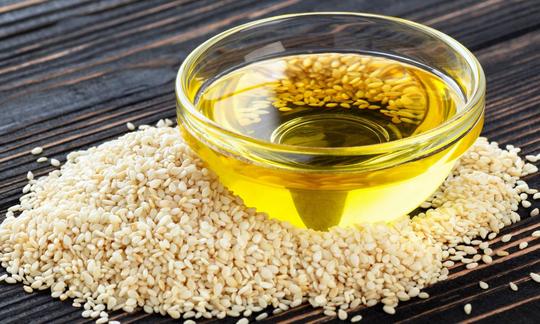

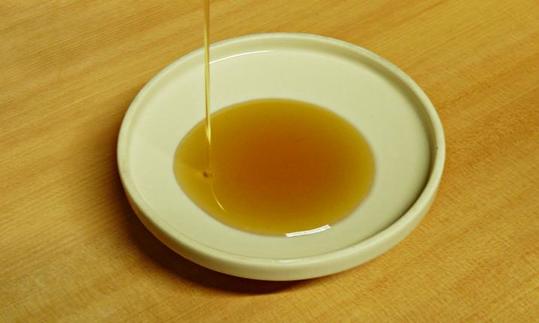

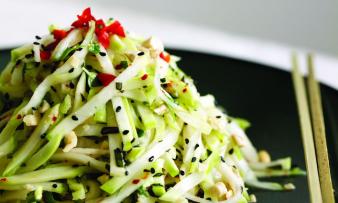
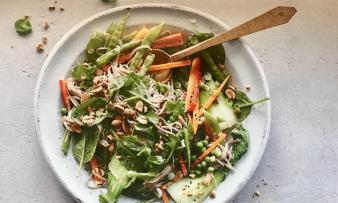
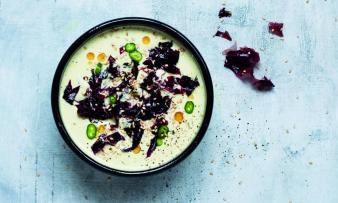





Comments